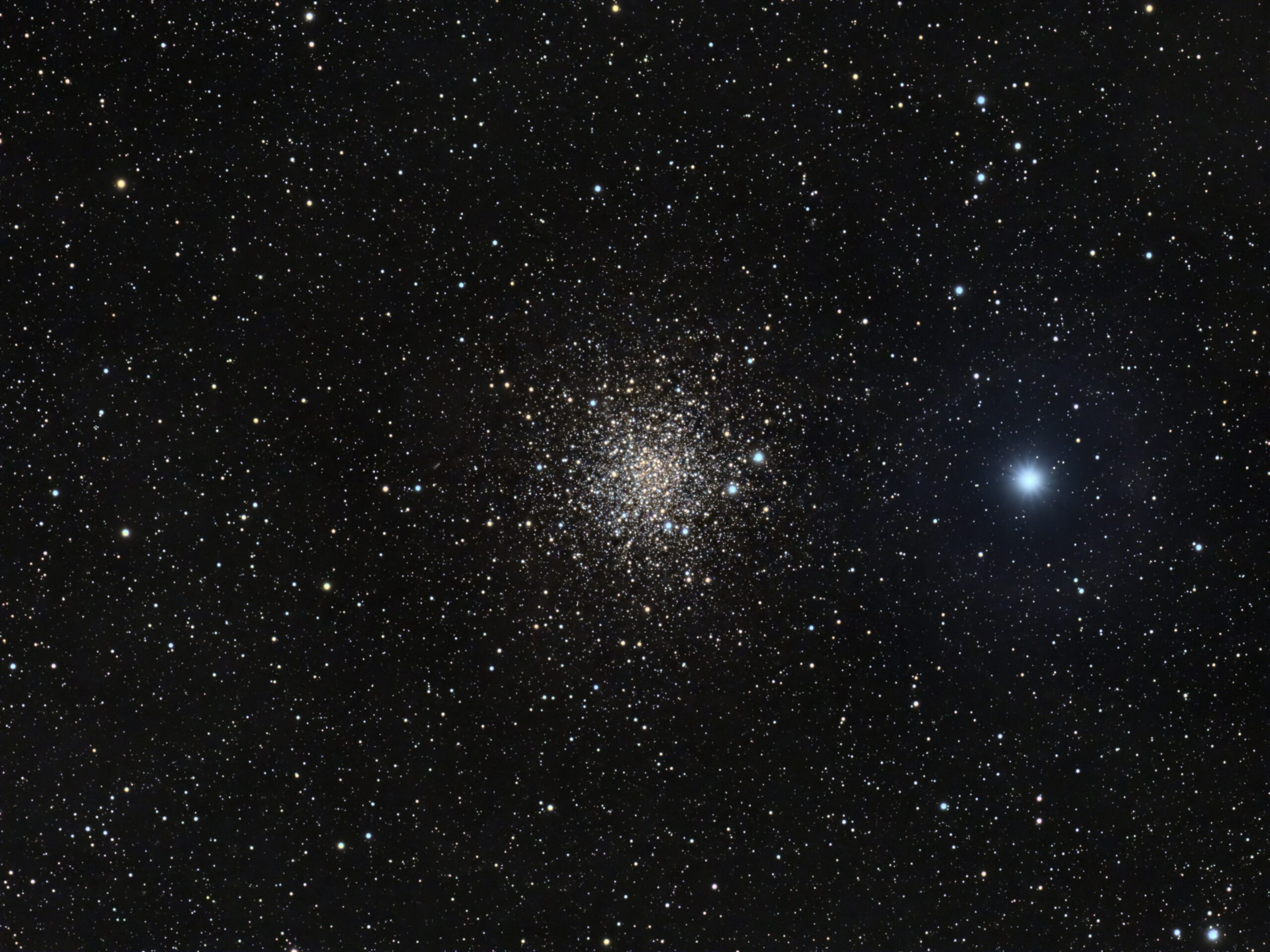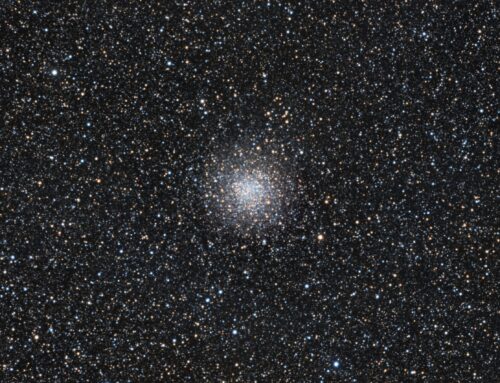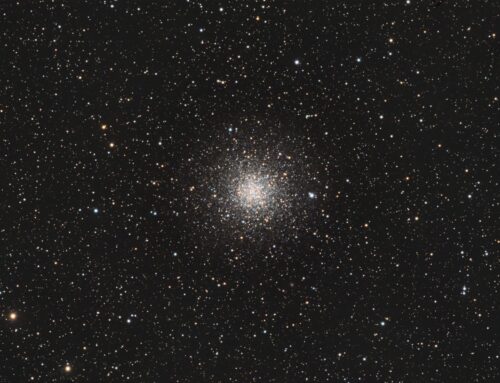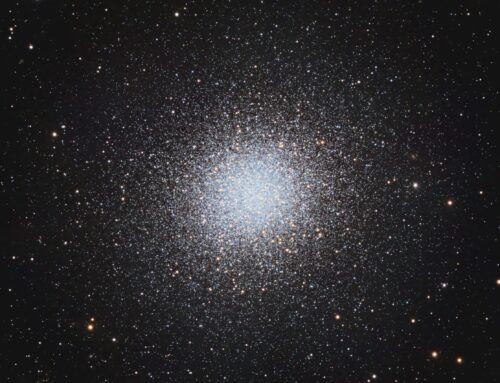NGC 6366
 Click image for full size version
Click image for full size version
June 8, 2023
Meet NGC 6366, one of more than 150 globular clusters orbit the Milky Way’s core. Each is a more-or-less spherical grouping of hundreds of thousands of stars tightly held together by gravity. Some, like M13 are big, bright, tightly packed and spectacular. Others… not so much.
NGC 6366 is usually overlooked in favour of the splashier globular clusters of Ophiuchus, like M10, M12 and M14. It is so sparse that it barely looks like a globular cluster at all. It is small and dim, covering less than a half-Moon’s width in the sky. It lies 11,700 light years from us.
Although it might not compete with its siblings for brilliance, there are some facts that make it interesting: it is a “metal rich” cluster, meaning its stars have relatively large amounts of elements heavier than hydrogen and helium. It contains relatively few low mass stars; one theory is that the lower mass stars have been stripped away by the main portion of the Milky Way galaxy through “tidal stripping.”
A previous version was published in the September 2015 Astronomy Magazine. Another image, from 2017, is posted here. It’s interesting to compare how my equipment, processing workflow, and results have evolved over the last eight years.
Tekkies:
Acquisition, focusing, and control of Paramount MX mount with N.I.N.A., TheSkyX and PHD2. Focus with Optec DirectSync motor and controller. Equipment control with PrimaLuce Labs Eagle 3 (2021) and 4 (2023) Pro computer. All pre-processing and processing in PixInsight. Acquired from my SkyShed in Guelph. Average transparency and seeing. Data acquired May 24-29, 2023 in a nearly moonless sky.
Luminance: Sky-Watcher Esprit 150 f/7 refractor and QHY600M camera with Optolong UV/IR filter
Chrominance: Takahashi FSQ-106 ED IV @ f/5 and QHY367C Pro one-shot colour camera with Optolong UV/IR filter
Total: 10hr35m
Preprocessing: The WeightedBatchPreProcessing script was used to perform calibration, cosmetic correction, weighting, registration, local normalization and integration of all frames.
Alignment of Master Frames: DrizzleIntegration was applied to the OSC frames (within WeightedBatchPreProcessing), and the result was aligned to the Luminance master with StarAlignment. This yielded aligned Lum and Colour masters.
Gradient Removal: DynamicBackgroundExtraction was applied to both masters.
Colour Calibration: SpecrophotometricColorCalibration was used to calibrate the OSC master.
Deconvolution: BlurXterminator was used on each master with automatic PSF, and star sharpening set to 0.10 with “Correct First” selected.
Linear Noise Reduction: NoiseXterminator was applied to each image with settings Amount=0.9 and Detail=0.15
Stretching: HistogramTransformation was applied to each image to make a pleasing yet bright image.
Nonlinear Processing
Luminance addition: LRGBCombination was applied to replace the lightness of the RGB image with the Luminance master.
Star Removal: StarXterminator was used to remove the stars, with Unscreen selected
Nonlinear Noise Reduction: NoiseXterminator was used to reduce noise in the background areas of the image with settings Amount=0.9 and Detail=0.1
Star Restoration: PixelMath expression combine(starless, stars, op_screen()) was used to combine the starless and stars-only images created with StarXterminator.
Final Steps: The RepairedHSVSeparation script was applied to correct colour artifacts in star cores. Background, cluster and star brightness, contrast and saturation were adjusted in several iterations using CurvesTransformation with masks as required. ICCProfileTransformation (sRGB IEC61966-2.1; Relative Colorimetric with black point compensation) was applied prior to saving as a jpg. Finder chart was made using the FindingChart process.







Nice work!!
Gorgeous image, of course!